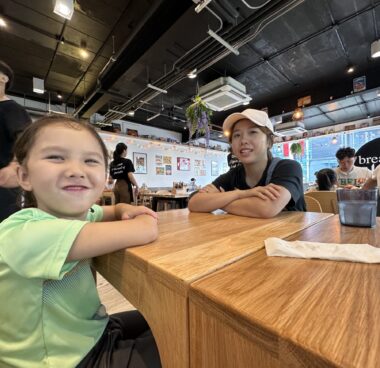Learning how to respond to our daughter’s outbursts
In our family, sometimes love means getting whacked and smiling anyway
Written by |

My daughter, Rylae-Ann, is a beautiful, bright little girl with a rare genetic condition called aromatic l-amino acid decarboxylase (AADC) deficiency. If you’ve never heard of it, you’re not alone. Most doctors haven’t, either. It’s a condition that affects the production of the neurotransmitters dopamine and serotonin, which means it affects everything from movement to mood.
My wife, Judy, and I spent years learning about this rare disease, adapting therapies, and helping Rylae-Ann achieve milestones we were once told she might never reach. But there was something we didn’t expect and were woefully unprepared for: spontaneous hitting, throwing, and outbursts.
Journey through the outbursts
There were no warnings. No patterns. Just random outbursts. One moment we’d be singing a song or enjoying a meal. The next, a cup of water would be sailing through the air, spaghetti would be flying, or worse, we’d get a firm whack to the face. Judy and I tried to remain calm. We really did. But when even the sweet, gentle, endlessly patient Grandma Ann got smacked across the cheek, we knew we had to figure this out.
One particularly painful memory comes from a Christmas gathering at Aunt Jean’s beautiful new house. Rylae-Ann dumped an entire cup of cranberry juice across her pristine white rug. Jean didn’t flinch. She smiled, hugged Rylae-Ann, and said, “It’s just a rug.” The adults in the room nodded and smiled, but inside, I was mortified.

Rylae-Ann and her mom, Judy Wei, enjoy a brunch with a glass of water well out of Rylae-Ann’s reach to prevent temptations. (Photo by Richard E. Poulin III)
At first, our parenting instincts took over. We responded with stern voices and immediate corrections. “No hitting!” “We do NOT throw food!” We tried every online suggestion, including reward charts, timeouts, role-play, and social stories. We pleaded. We punished. We scolded. But nothing worked.
The truth is, as parents, we weren’t reacting with patience. We were reacting with fear. Fear that our daughter was losing control. Fear that something was wrong we couldn’t fix. And fear that it might never get better.
But eventually, something shifted. Not in Rylae-Ann, but in us.
Over the last year, we stopped fighting the behavior and started accepting it instead. Not condoning it, but recognizing that Rylae-Ann wasn’t acting out at us. She was trying to deal with something within her.
It hit me one night while eating dinner. Judy placed a cup of water in front of her. She looked anxious and agitated. It was like something was building inside her. And then, suddenly, she threw the cup. She immediately looked sorry.
That’s when it clicked.
It reminded me of hiding during a game of hide-and-seek. You know they’re getting close. The tension grows. You want to win, but the anxiety becomes unbearable. So instead of waiting to be found, you jump out of your hiding spot and shout, “Here I am!” just to end the suspense.
That’s what I think Rylae-Ann was doing. The anxiety of knowing something might happen was worse than the thing itself. So she just made it happen, to get it over with.
With that understanding, we changed our response. When an outburst happened, we ignored it. We stopped giving it emotional energy. Instead, we gave her love and attention before and after, but not during. We let the storm pass. We focused on her anxiety, not the behavior.
It wasn’t easy. There were times Judy and I slipped back into old habits. But over time, the frequency dropped. Then the intensity. Then one day, it just didn’t happen.
I don’t think we “fixed” Rylae-Ann. That was never the goal. What changed was how we saw her. We stopped trying to stop the behavior and started trying to understand it.
Sharing our journey
Now, when we share our story with other parents, it turns out to be a common issue post-gene therapy. Parents often ask us, “What did you do to make it stop?” And I always say the same thing: We stopped reacting to the outbursts and started responding to the anxiety.
Patience didn’t come naturally to us. But my daughter taught me. Judy encourages me. And even cranberry juice on Aunt Jean’s rug reminded me: Love isn’t loud. It’s quiet. It waits. It understands. And sometimes, it is getting whacked in the face and smiling anyway.
Note: AADC News is strictly a news and information website about the disease. It does not provide medical advice, diagnosis, or treatment. This content is not intended to be a substitute for professional medical advice, diagnosis, or treatment. Always seek the advice of your physician or other qualified health provider with any questions you may have regarding a medical condition. Never disregard professional medical advice or delay in seeking it because of something you have read on this website. The opinions expressed in this column are not those of AADC News or its parent company, Bionews, and are intended to spark discussion about issues pertaining to aromatic l-amino acid decarboxylase deficiency.





Leave a comment
Fill in the required fields to post. Your email address will not be published.